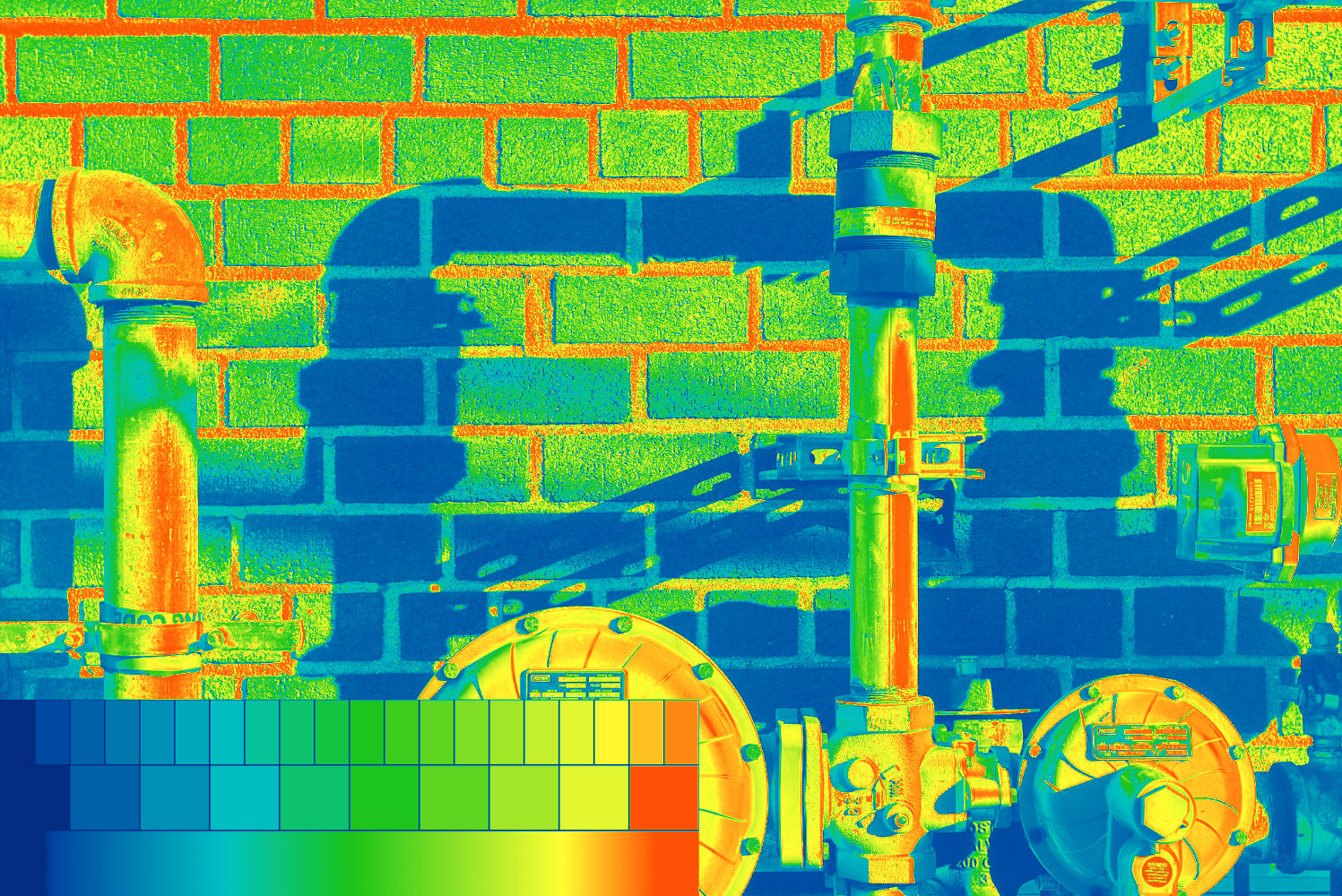False Color in Capture One
28 Sep 2023 ∞

As I've been doing more motion work there are often aspects of that workflow I'd like to take advantage of in my stills workflow with Capture One. While not everything translates directly, there is one that does: false color.
False color maps values in an image into a gradient, usually with blue for darker colors, green for mid-tones, and red for highlights. There are many variations on how the colors map. Some profiles drop most values to greyscale only highlighting certain ranges, others use a continuous gradient, and everything in between.
There are lots of existing LUTs you can download or you can even create your own, but none of them matched the false color I'm used to: the FSI LUM coloring.
Creating a LUT
In order to match the full gradient, and particular color stops, I created a test chart. It had a gradient from black to white, plus specific values broken out every 10 and 5 percent. The basic gradient goes blue, teal, green, yellow, red. However each of those colors aren't evenly distributed. The green mid-tones takes up more space, and there's an interesting sharp gradient in the deep blues.
I set up a gradient map in Affinity Photo so I could tweak the colors visually. The teal and yellow were toned down a bit because they appear visually brighter than their surrounding colors. Once I was happy with the gradient I exported a LUT from Affinity Photo (which is a great feature and something I hope more photo software integrates).
False Color in Capture One
Capture One, unfortunately, does not have any support for LUTs, so my artisanal hand-crafted cube file isn't helpful. There's a command line tool, ocio, which can convert between different LUT formats, and also convert a LUT into an ICC profile. Capture One uses ICC profiles for everything: camera color profiling, working color space, processed image color, etc. The last one is what we'll take advantage of.
When creating a process recipe you can, of course, select the color space. Most of the time that will be Adobe RGB or sRGB, but it can be any profile, including our false color ICC profile. In order to use false color the ICC profile needs to be copied to ~/Library/ColorSync/Profiles, a quick restart of Capture One and the profile will show up in the list1.
Create a new False Color recipe, most of the settings don't matter, but select the false color profile. By toggling Recipe Proofing with the False Color recipe selected Capture One will render the image with that profile, or to put it another way: in false color.
Some Caveats
The first caveat is that using recipe proofing is kind of a work around. If you select a different recipe you'll get a different proofed profile.
The next is a quirk in how Capture One appears to render blown out highlights, possibly combined with an artefact of the LUT to ICC conversion. Portions of the image which are (255, 255, 255) don't render as the red from our gradient map, but instead as a light pink. Affinity Photo doesn't do this, which makes me think it's a C1 thing.
In Practice
False color is an incredibly useful tool, and it's something I hope will be integrated into stills. Maybe one day Capture One will add it in addition to the basic highlight and shadow warnings (they already have vectorscope-style color wheels). In the meantime you can download the profile and try it out for you next shoot.
If Capture One doesn't read the profile it can also be copied to
Contents/Frameworks/ImageProcessing.framework/Versions/A/Resources/Profiles/Outputinside the app bundle, however this needs to be done for each version.↩